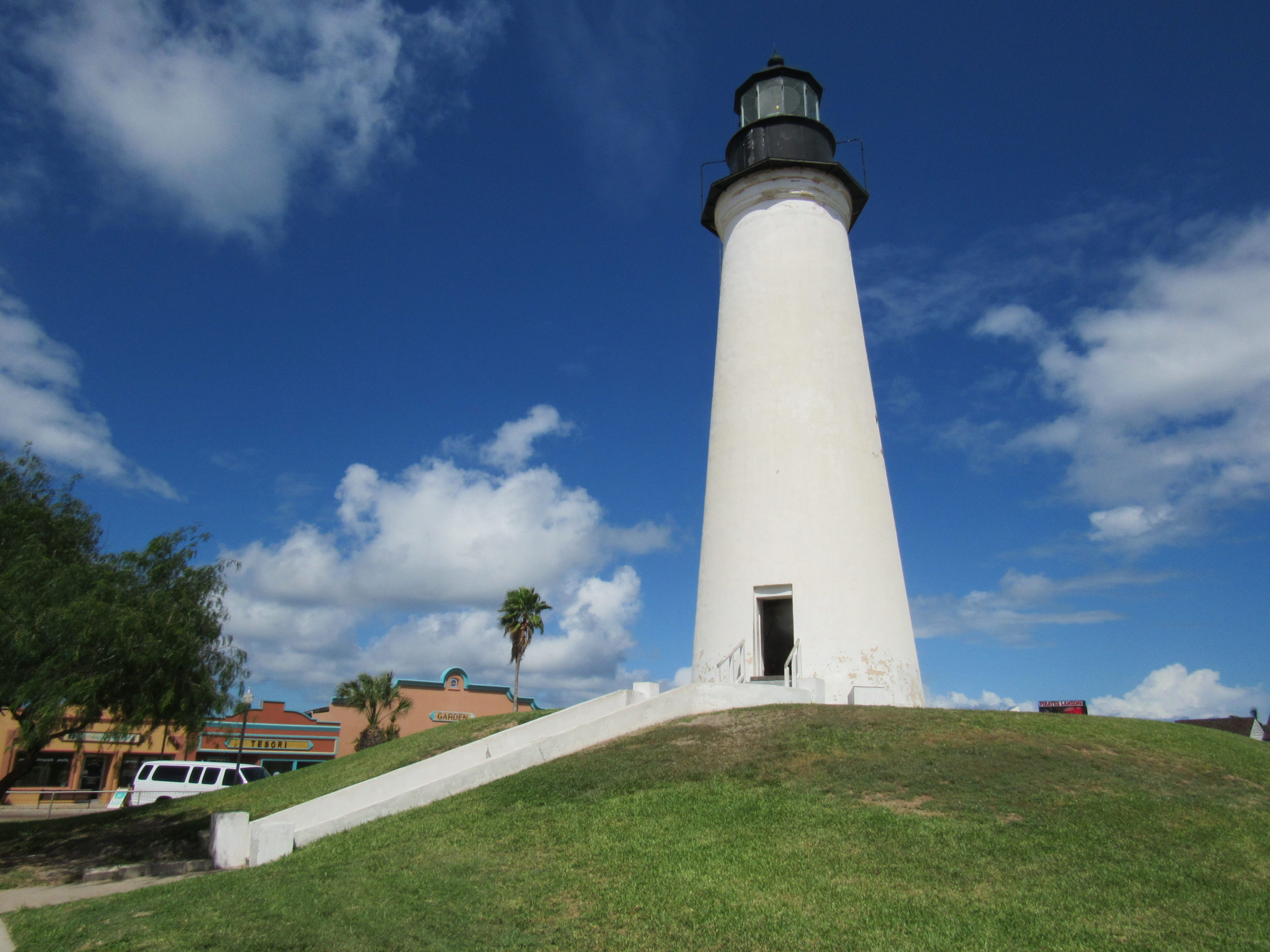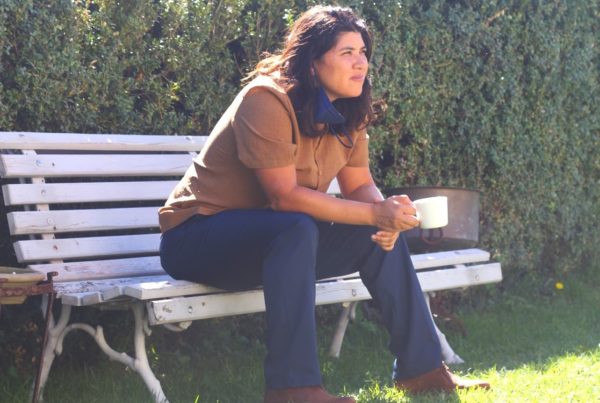The Port Isabel Lighthouse is a white brick tower that sits on a berm near the southernmost tip of Texas. For the second half of the 19th century, the lighthouse helped bring commercial vessels in the Gulf of Mexico safely back to shore. It played a key role in the development of South Texas. Now, it’s a state historic site whose beacon hasn’t shone in more than 117 years.
That will change soon, though. On Dec. 9, a new lens will illuminate the top of the tower once again. The unofficial keeper for the lighthouse, Valerie Bates, is also the marketing director for the city of Port Isabel. She spoke with the Texas Standard on the search to repair the lens, the illumination of the light, and how the testing of Space X rockets affects the historical site. Listen to the story above or read the transcript below.
This transcript has been edited lightly for clarity:
Texas Standard: First, tell us a little bit more about the lighthouse’s history. When was it last used?
Valerie Bates: It was decommissioned in 1905. A series of events just made it not as relevant. The direction of imports and exports changed. Railroads changed the way people moved commerce about, and so it was a cost to the government, and they decided it was no longer paying its way. So in 1905, they decommissioned it. At that time, the lens was removed from the top of the lighthouse.
Of course, these days everyone has GPS. You don’t need a lighthouse necessarily to navigate along the Texas Gulf Coast if you’re an experienced navigator. Who came up with the idea to get the lighthouse burning once more?
Well, it’s not going to be a navigational beacon. So this is a historical interpretation, but just moments after the turnover from Texas Parks and Wildlife Department to the Texas Historical Commission in 2019, they began to try to source a lens for the top of the lighthouse.
How hard is that to do?
Well, it turns out that there’re not very many people in the world who either manufacture parts, manufacture the lens, install the lens and service them. So they tracked the one person down – Dan Spinella in Florida, who worked off of the original 1880s plans and made that lens that now sits in the lighthouse.
That’s remarkable. You found the one person who could actually come back up with a new lighthouse lens. What actually provides the source of light for that lens?
Originally, it was an oil lamp that had three wicks in it. It was supposed to be kept clean and trimmed to a certain length, and that small amount of light source was what the lens would then magnify and project these beams out over the waters. Now we have a thousand-watt halogen bulb in there. It’s electrified in a lamp, and so we have the benefit of modern technology, but in a very traditional design.
How far out will you be able to see this beacon?
I’m not sure. The original beacon could be seen 16 miles to sea, which was absolutely remarkable at the time. I don’t know that we are going to have the capability of measuring this exactly. I don’t know. That’s something we’re sort of entering with.
I have to ask you, given where you are along the Texas Gulf Coast, how secure is the future of the lighthouse? I know that there have been some concerns about how the Space X launches nearby might affect its structural integrity, for example.
Well, some vibration tests have been done, and we’re continuing to keep an eye out for that. Staff have been in the lighthouse when the explosions have happened or launches have happened, and you can feel the building and the stairway shake in there, so we don’t know. We’re just hoping that we can all be good neighbors and the lighthouse survives this for future generations.
So earlier I called you the “unofficial lighthouse-keeper.” Do you actually live in the lighthouse or no?
No. The lighthouse and the keeper – the keeper and the keeper’s family, and the assistant and the assistant’s family – historically lived in the keeper’s cottage, which is now a visitor center. It was constructed in 1855. This is a modern version that was constructed in the 1990s off of those 1855 plans, so nobody lives on the ground, and the idea of living in the lighthouse – it’s a very conical structure. It’s 20 feet in diameter at the bottom and only gets narrower at the top, so living in the lighthouse would be interesting in any day and age.
Yeah, you’re not going to volunteer, it sounds like.
No, nobody. We lock the door when staff goes home. The lighthouse watches itself.















